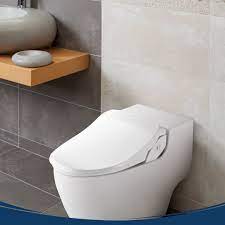Bidet Toilets: The Pros and Cons
Bidet toilets have become increasingly popular in recent years, particularly in countries where bidets have long been a common feature in bathrooms. These toilets offer a range of benefits, from improved hygiene to more comfortable cleaning. However, like any plumbing fixture, there are also downsides to consider. Here, we explore the downside of a bidet toilet to help you decide whether this is the right choice for your bathroom.
1. Installation Costs
The first and most obvious downside of a bidet toilet is that it can be expensive to install. Unlike a traditional toilet, which only requires a basic plumbing connection, a bidet toilet requires a more complex system of pipes and hoses. Additionally, the toilet itself may be more expensive than a standard model, further driving up the overall installation cost.
2. Maintenance and Cleaning
Another important consideration is that bidet toilets require more maintenance and cleaning than other toilets. The additional plumbing connections and hardware can create more opportunities for leaks and clogs, while the bidet function itself requires regular cleaning to prevent buildup of bacteria or other harmful microorganisms.
3. Compatibility with Existing Plumbing
Depending on the age and design of your home's plumbing system, a bidet toilet may not be compatible with your existing pipes and fixtures. For example, if your home has older plumbing or a septic system, you may need to upgrade your system to accommodate the increased water usage of a bidet toilet.
4. Learning Curve
If you have never used a bidet toilet before, there may be a bit of a learning curve before you feel comfortable using it. This can be especially true if you are accustomed to using toilet paper to clean after using the bathroom. It takes some time to get used to the sensation and the settings of the bidet function.
5. Reduced Water Pressure
One disadvantage of some bidet toilets is that they can reduce the overall water pressure in your home. This often occurs when the toilet is in use, which can make showering or washing dishes difficult if you have multiple people in the home.
6. Electrical Requirements
Some bidet toilets require an electrical connection to operate, which means that you will need to ensure that you have an electrical outlet installed near the toilet. Additionally, you may need to pay more for your monthly energy bill due to the increased usage.
7. Limited Availability
Bidet toilets are still relatively uncommon in many parts of the world. This means that it may be difficult to find a model that you like or that fits within your budget. Additionally, you may need to pay a premium for shipping or installation if you live in an area where bidet toilets are not widely available.
8. Reduced Floor Space
Because bidet toilets require additional hardware and plumbing connections, they can take up more floor space than a traditional toilet. This can be a major drawback if you have a smaller bathroom or if you are trying to maximize your available floor space for other functions.
9. Potential for Malfunction
As with any complex plumbing fixture, bidet toilets have the potential to malfunction or break down over time. This can be especially frustrating if you rely on the bidet function as your primary mode of cleaning after using the bathroom.
10. Personal Preference
Finally, it is important to remember that bidet toilets may simply not be right for everyone. Some people may find the sensation uncomfortable or unpleasant, while others may simply prefer the traditional toilet-and-toilet-paper method of cleaning after using the bathroom. It is up to you to determine whether the benefits of a bidet toilet outweigh the potential downsides.

